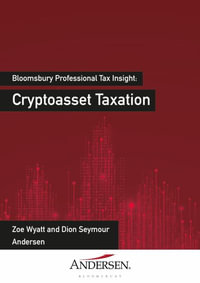| Theoretical Issues | |
| The Political Economy of Government Debt: A Survey | |
| Introduction | |
| The Intertemporal Government Budget Constraint | |
| The Effects of Government Debt | |
| Positive Theories of Public Debt | |
| Long Term Debt Strategy: A Survey | |
| Introduction | |
| Characterizing Public Debt | |
| The Effect of Public Debt on the Economy | |
| Normative Aspects of Debt Policy | |
| Concluding Remarks | |
| The Politics of Intergenerational Redistribution | |
| Introduction | |
| The Model | |
| The Economic Equilibrium | |
| Voting on Debt Repudiation | |
| Equilibrium Intergenerational Redistribution | |
| Concluding Remarks | |
| Social Security and the Deficit in the US: A Political Economy Approach | |
| Introduction | |
| Social Security and the Budget: Some Background Facts | |
| The 1983 SS Fixup and the Role of the Trust Fund as a Commitment Device | |
| A Model of Congressional Behavior with Respect to SS and the Rest of the Budget | |
| Interpretation of Past Events in Light of the Model and its Implications for the Current Policy Debate and the Future | |
| Concluding Reflections | |
| Endogenous Technology, Budgetary Regimes and Public Debt | |
| Introduction | |
| Endogenous Technical Change | |
| Private and Public Production of Technology | |
| Macroeconomic Model | |
| Fiscal Policy, Productivity Growth and Budgetary Regimes | |
| Choice of Regime: Some Political Aspects | |
| Conclusion | |
| Economic and Monetary Union in Europe and Constraints on National Budgetary Policies | |
| Introduction | |
| EMU: A New Environment for Budgetary Policy | |
| Monetary Union and Prospects for Budget Discipline | |
| Intergenerational Equity and Intertemporal Efficiency | |
| Stabilization Policy | |
| Concluding Comments | |
| Monetary Discipline and the Real Value of Government Debt: The Case for an Independent Eurofed | |
| Introduction | |
| Competition among the Treasuries and Central Banks of a Monetary Union | |
| European Monetary Union with an Independent Central Bank | |
| Reasons for Joining the EMS. Conclusion | |
| Empirical Applications | |
| The Determinants of the Ricardian Equivalence in the OECD Countries | |
| Introduction | |
| Testing Ricardian Equivalence with Time-Series Cross-Section Data | |
| Ricardian Equivalence Indicators for Each Country | |
| Conclusions | |
| Debt Neutrality, Finite Horizons, and Private Savings Behavior | |
| Introduction | |
| Public Debt Neutrality in a Finite-Horizon Economy | |
| Debt Neutrality and Private Savings Behavior | |
| Conclusion | |
| Management of the Nominal Public Debt: Theory and Applications | |
| Introduction | |
| The Model | |
| Public Debt Management: Numerical Simulations | |
| Debt Maturity in Italy, Ireland, and the United States | |
| Concluding Remarks | |
| Interest Rates and Government Debt: Are the Linkages Global rather than National? | |
| Introduction | |
| General Background | |
| The Growth of Public Debt in OECD Countries | |
| Debt and Interest Rates: Empirical Results | |
| Concluding Remarks | |
| Self-Correcting Deficits: A New Lesson in Functional Finance | |
| Introduction | |
| Theory and Hypotheses | |
| Description of Equations | |
| Characteristics of the Models | |
| Conclusions | |
| Positive Theories of Public Debt: Some Evidence for Germany | |
| Introduction | |
| The Tax Smoothing Theory of Public Debt | |
| Political Determinants of Government Budget Deficits | |
| Testing the Tax Smoothing Hypothesis of Public Debt for the FRG | |
| Testing for Political Determinants of Government Debt Growth in the FRG | |
| Some Concluding Comments | |
| Suggestions for a New Set of Fiscal Indicators | |
| Introduction | |
| The Uses and Abuses of the CAB | |
| Constructing Indicators: A General Strategy | |
| Indicators o | |
| Table of Contents provided by Publisher. All Rights Reserved. |
























